

Table of contents
- possible applications
- Preparation
- make cement water
- alternatives
So-called cement water, cement slurry or cement adhesive can be used to securely bond old and fresh concrete together. We show how the primer can be made.
possible applications
The cement adhesive can be used, for example, when an old concrete surface is to be renovated. If this cracks, becomes unsightly or uneven over time, a new coat can solve the problems and can be used for leveling.
But it is also possible, for example:
- create a necessary gradient
- to raise walls
- to compensate for damage
- to thicken walls
Preparation
Before the cement adhesive and a new layer of concrete are applied, the hardened concrete must first be prepared appropriately. This requires the following steps:
dry cleaning
Coarse and dry dirt can be removed with a broom with stiff bristles. Moss and other deposits should also be removed by scraping or brushing them out of the joints and off the stones.
Wet cleaning
Since not all dirt can be removed with dry cleaning, the hardened concrete should be cleaned with a damp cloth afterwards. In the case of stubborn dirt, it is advisable to soak the surface in advance with a mixture of soda and warm water. Afterwards, moss and other residues can be removed with a brush.
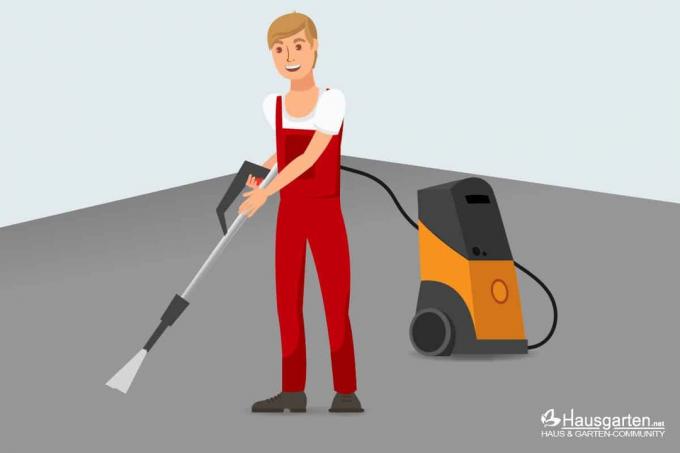
repair damage
If there are cracks or holes in the hardened concrete, these must be cleaned and fragments removed before the cement water is applied.
let dry
Before the primer is distributed, the concrete must be allowed to dry completely. It therefore makes sense to carry out the preparatory measures on a dry and sunny day and allow the concrete to dry for at least several hours, preferably overnight or a day permit.
Tip:
In order to protect the cleaned hardened concrete from renewed soiling and moisture before it is applied, waterproof tarpaulins can be stretched over it. However, they should not lie directly on them so that the surface can dry completely and undisturbed.
make cement water
The production of cement water is very simple and requires few accessories and only two means - water and cement.

Also necessary are:
- a bucket or a mason's troupe
- a drill with a mixer attachment or another utensil for stirring
- a shovel
- a piassava broom
- a measuring cup if necessary
Instructions
- Measure water and pour into bucket or mason's jar.
- Add cement powder to the water while stirring to avoid lumps forming. A scoop of cement is added to ten liters of water.
- Stir the mixture until the dry powder is evenly distributed and a homogeneous solution is formed.
- Mix the fresh cement so that it can be distributed immediately after the cement water has been applied.
- Distribute the primer on the concrete surface and work in with the broom.
- Apply the cement directly to the primer, distribute evenly and smooth.
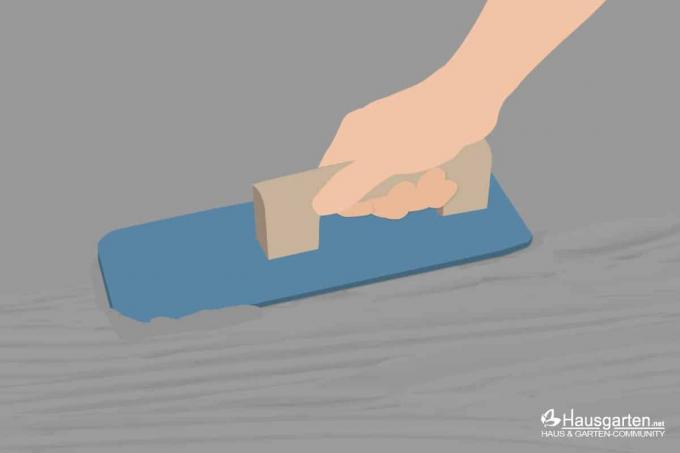
Now the fresh concrete only has to dry completely until it can be walked on or driven on. Depending on the thickness of the layer, temperature and humidity, this can take a few days. Until then, the newly concreted area should be cordoned off and, if possible, covered with tarpaulins.
Tip:
It is ideal if the work is carried out by two people. This makes it possible to prepare the cement paste and the cement itself at the same time and to spread them on the floor in a timely manner.
alternatives
As an alternative to the cement paste, there are other means with which hardened concrete and fresh concrete can be connected to each other. Below:
- adhesion primer
- reinforcement iron
- turnbuckles
The advantage of a primer is that it usually does not need to be mixed. This makes the application quick and easy. The disadvantage of this is that the products are usually more expensive than making cement water yourself. However, the areas of application are the same for both agents.
Reinforcement irons are pieces of metal that are inserted halfway into the existing concrete. To do this, holes must first be pre-drilled. The second half of the reinforcement iron protrudes and thus serves as a holder for the fresh concrete. Cement water or primer can be used in addition to the reinforcing iron. This increases adhesion. The plug-in connections can be used primarily for raising or extending a wall, but also for building foundations.
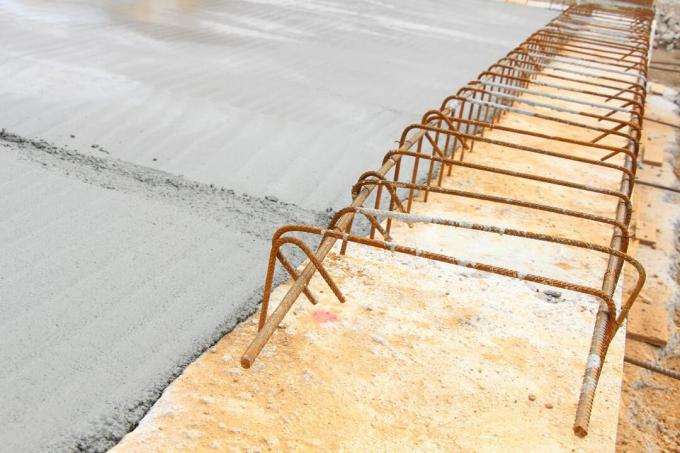
Turnbuckles are the tool of choice for finished concrete parts that are to be joined. They are similar to the reinforcing irons, but consist of two parts that are brought together and screwed together. As a result, a recess must remain in the concrete parts, which may already be present in some pieces in the trade but usually have to be made yourself. The advantage is that finished concrete parts can be easily connected to each other. However, the effort is greater for parts that are not yet provided with recesses. In addition, the cost is greater than in the production of cement water. However, walls can be erected very quickly with this method and connection technology. In addition, the technique is suitable for any area where concrete cannot be poured and no primer is required.
 Home editorial office
Home editorial office
Learn more about concrete, screed and cement
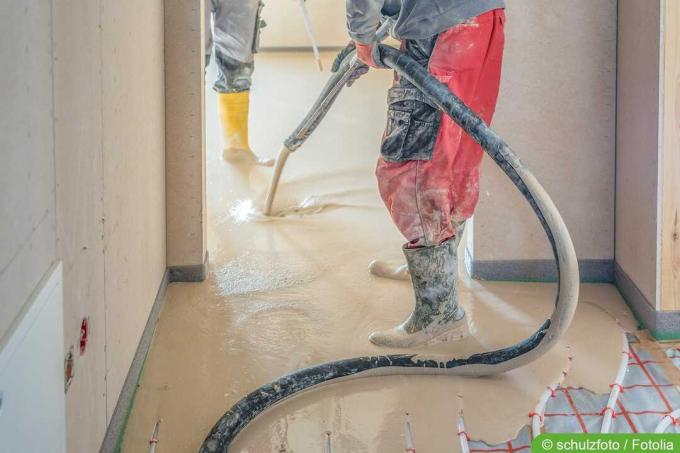
Fresh screed: when can it be walked on?
Screed is the basis for many floor coverings. It is durable and easy to care for. However, if the load is applied too quickly after application, it can be damaged, with costly consequences. We show how long the drying time is.

What is fiber concrete? | Features & Best Practices
What is fiber concrete? This term describes special concretes that are mixed with different fibers. They expand the possible uses in many ways and have an effective effect on the stability and durability of the concrete.

What is trass cement? | The differences to cement
Trass cement describes a special type of cement with corresponding amounts of trass. The additive makes the mortar mixed from it more resistant and is effectively suitable for certain areas of application. In this guide you will find out how the mixture differs from conventional cement mixtures.

What is flow concrete | Properties & Applications
As the name suggests, flowable concrete is a much more fluid mass than conventional concrete. This is made possible by adding a flow agent. You can find out about the properties and areas of application of concrete in this guide.

How much does a cubic meter of concrete cost? | precast concrete prices
The independent production of concrete is done in a few simple steps thanks to ready-mixes from the hardware store. The so-called ready-mixed concrete consists of various components and is available in different variants depending on the intended use. The price per cubic meter depends on several factors.
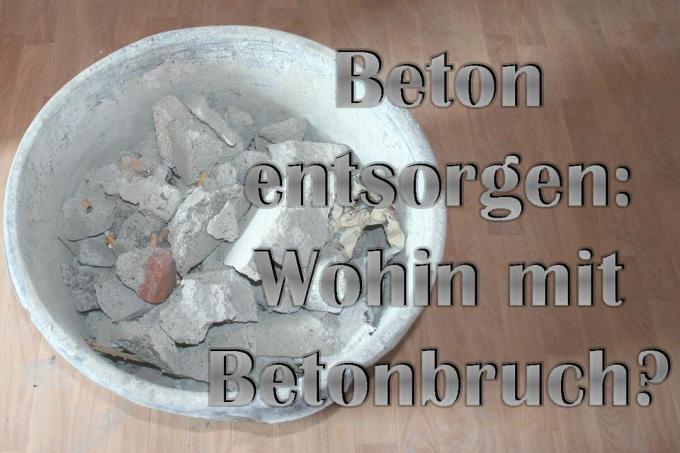
Disposing of concrete: what to do with broken concrete?
Broken concrete often occurs during conversion or demolition work. It is clear that the chunks do not belong in the normal household waste. However, this raises the question of whether concrete is building rubble, construction waste or even hazardous waste.
